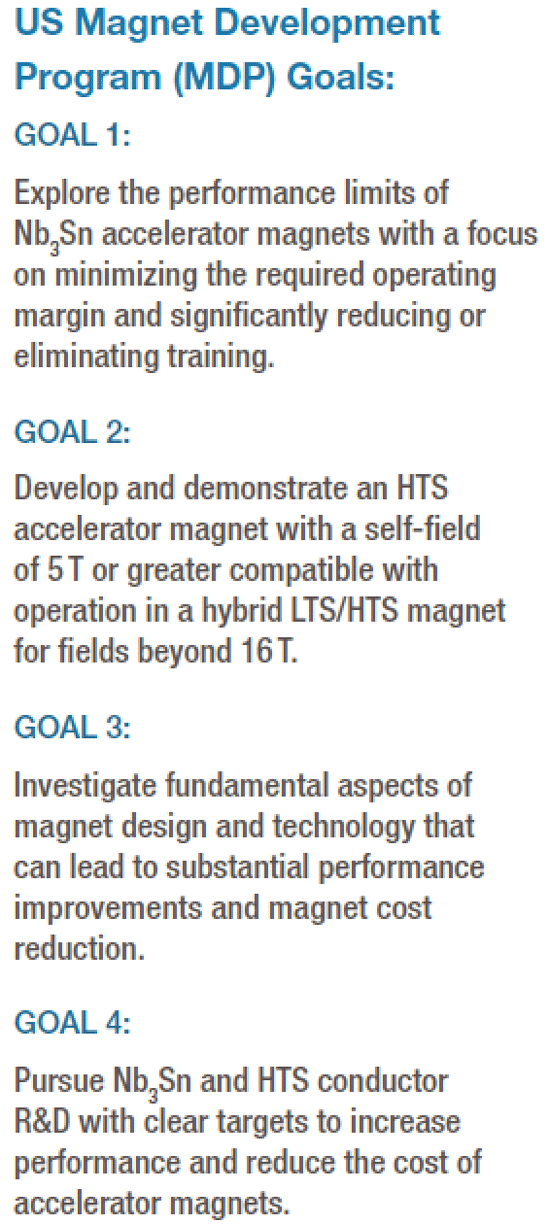The U.S. Magnet Development Program aggressively pursues the development of superconducting accelerator magnets that operate as closely as possible to the fundamental limits of superconducting materials and at the same time minimize or eliminate magnet “training” — the need to break in a magnet in a series of steps to achieve its design field strength.
LBNL has been named as the leader of this R&D program, partnering with Fermilab and the National High Magnetic Field Laboratory at Florida State University, with opportunities to come for additional partners engaged in R&D relevant to high-field magnets.
Background and Motivation
The 2014 Particle Physics Project Prioritization Panel (P5) Report identified a critical need for transformational high field magnet R&D focused on substantially increasing performance and lowering the cost per tesla-meter. This need was subsequently reiterated in a report by the Accelerator R&D subpanel of the High Energy Physics Advisory Panel.
In response, the DOE Office of High Energy Physics initiated the ambitious U.S. Magnet Development Program, coordinated by LBNL, based on four goals that summarize the P5 and Subpanel recommendations.
These goals will be achieved by focusing on high field dipole development along four elements.
The program is focused on transformational magnet technologies, leveraging the significant experience base developed in the magnet programs while incorporating a strong science-based element to address limitations to magnet performance. Success will rely upon a collaborative effort of U.S. national labs, industry and universities that takes maximum advantage of existing infrastruc- ture and expertise at the participating institutions by combining and coordinating intellectual and infrastructure resources. The work outlined here will advance high-energy physics while increasing our own capabilities in accelerator magnet technology. This will position the U.S. for a leadership position in the development of enabling technology for the next generation of very high energy proton-proton colliders and, in the nearer term, establish a technology base for a possible energy upgrade of the LHC. As an HEP funded Program, its primary focus is on magnets for accelerators, but the generic approach will develop magnet technologies that can be applied to a large variety of applications across the DOE Office of Science and beyond. |

|
